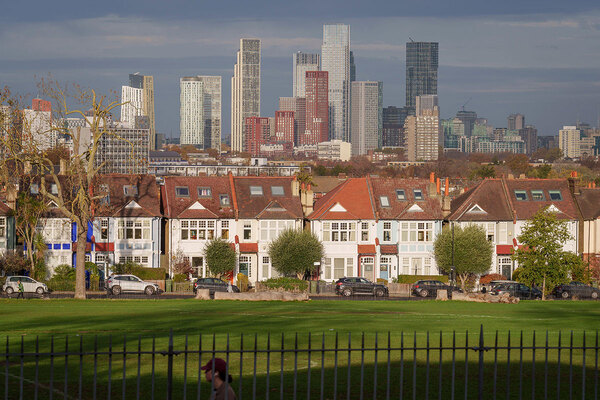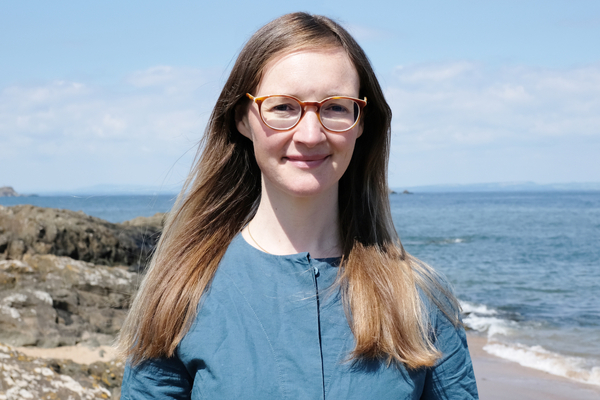Trees are nature’s climate solution - and they cool our homes
We must not forget that trees are a crucial component of sustainable urban cooling strategies, writes Heidi Kagiali, forestry and conservation manager at the Programme for the Endorsement of Forest Certification (PEFC)
As global temperatures soar and urban areas become increasingly unbearable during extreme heat events, the role of trees in cooling our living environments has never been more critical.
The summer of 2025 marked another record-breaking season across Europe, with the UK experiencing its hottest summer since records began, averaging 16.13°C. In cities worldwide, residents faced dangerous indoor temperatures, with some tower blocks recording internal temperatures of 34°C.
For many, their homes offered no refuge from the sweltering heat, highlighting an urgent need for sustainable cooling solutions.
Buildings in traditionally cooler climates were not designed to handle extreme heat. The materials commonly used in high-density urban developments – including concrete, asphalt, and brick – possess high thermal mass, absorbing substantial heat energy during the day and releasing it slowly throughout the night. This creates a persistent ‘thermal trap’ effect where interiors remain uncomfortably hot long after sunset.
Research demonstrates that concrete can reach surface temperatures of 49.3°C while maintaining elevated near-surface air temperatures of 35.6°C. The urban heat island effect compounds this problem. Cities can experience temperatures 4°C to 6°C higher than surrounding rural areas, with extreme cases showing differences up to 10°C.
Trees offer a sophisticated natural cooling system through multiple interconnected mechanisms, cooling homes by up to 5°C through shading and evapotranspiration. Tree canopies, for example, can reduce the amount of shortwave radiation reaching ground level by up to 90%, and research shows that tree shade can reduce air temperatures by 1.19°C on clear days and 0.51°C in cloudy conditions.
The evapotranspiration process transforms sensible heat into latent heat as trees release water vapour through their leaves. This mechanism alone contributes approximately 29% of the total cooling effect under trees.
Sheffield became the first city in Europe to participate in PEFC’s Trees Outside Forests (TOF) certification pilot programme for sustainable urban forest management.
The Sheffield Street Tree Partnership undertook strategic tree planting across the city, focusing on maximising canopy cover to achieve optimal cooling effects. The programme emphasised extensive groundwork and proper tree pit construction to encourage trees to grow as large as possible, recognising that maximum canopy cover yields the highest amount of shade and greatest cooling benefits.
Following successful piloting, PEFC’s UK Trees Outside Forests Standard was formally endorsed in July 2024. This certification enables local authorities to demonstrate responsible management of urban trees and green assets according to internationally recognised sustainability standards.
“Trees offer a sophisticated natural cooling system through multiple interconnected mechanisms, cooling homes by up to 5°C through shading and evapotranspiration”
The municipality of Zwolle in the Netherlands achieved a historic milestone by receiving the first-ever PEFC Trees Outside Forests certificate. Working with PEFC Netherlands, this comprehensive urban forestry programme documented all city trees in streets and parks, establishing proper maintenance, pruning and replacement protocols. The certification ensures sustainable management of urban trees while opening additional markets for certified materials when trees require removal.
Trees alone will not solve the challenge of overheating homes, but they represent a crucial component of sustainable urban cooling strategies. They provide a natural, cost-effective and visually appealing cooling solution with wide-ranging environmental and social benefits.
As climate change intensifies and summers become longer and hotter, embracing sustainable solutions such as urban forestry becomes increasingly important for protecting community well-being. The pioneering examples of Sheffield and Zwolle provide valuable blueprints for cities worldwide seeking to harness nature’s cooling power while maintaining internationally recognised sustainability standards.
Through proper planning, species selection and sustainable management practices, urban trees can serve as powerful allies in creating more liveable, resilient cities capable of withstanding the challenges of our warming climate.
Heidi Kagiali, forestry and conservation manager, PEFC



